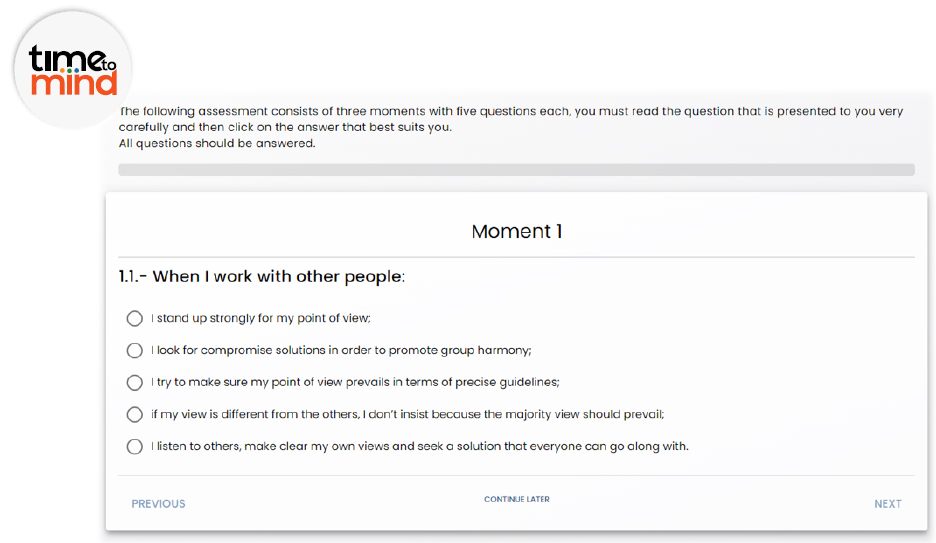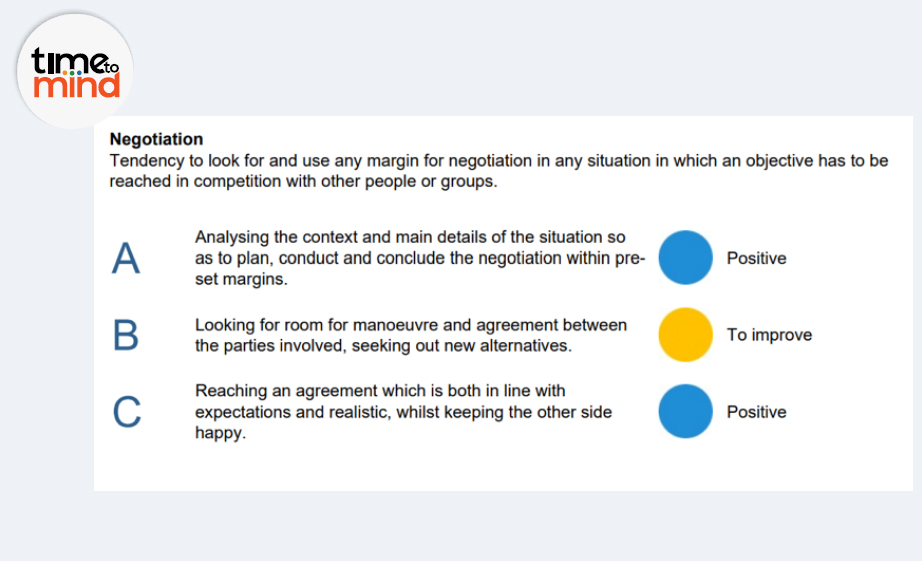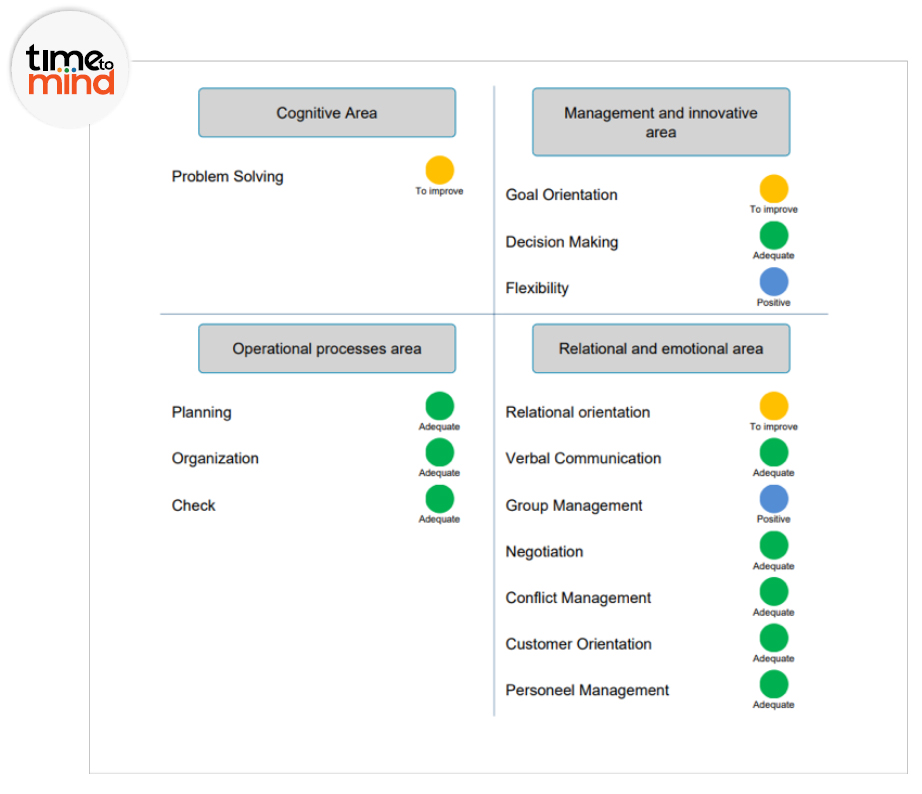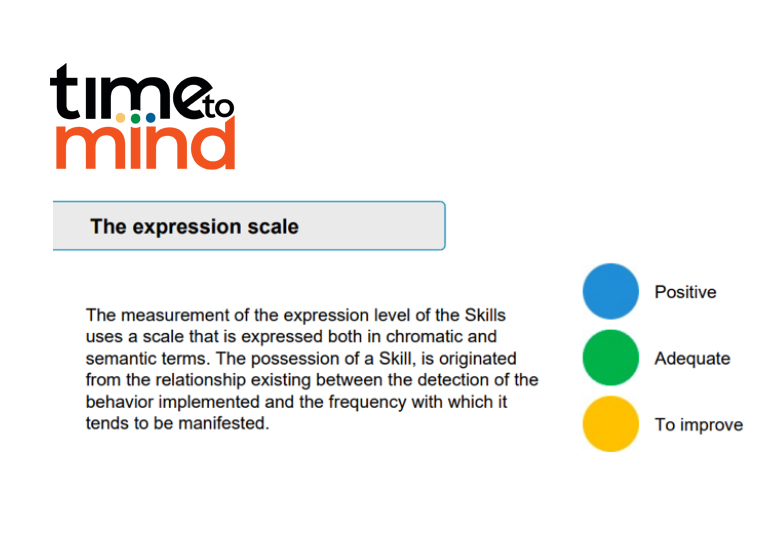WITHIN THE TIME TO MIND PLATFORM
HOW TO USE THE
TIME TO MIND PLATFORM
The simplicity of each step, the effectiveness of the results
The platform is divided into two main areas:
CUSTOMER AREA:

PROVIDES THE FOLLOWING OPTIONS
→ Choice of “Worker Assessment,” “Youth Assessment,” “Orientation,” “Post-Assessment,” “Exclusives.” This results in the purchase and assignment of each to participants (or to the participant, who may be the same client)
→ Area summarizing the chosen Assessments and results.
→ “My Post-Assessments” area, if you want to activate a post-assessment
→ “My class reports” area, if the option for multiple participants is activated.
→ “My Feedback” area if you chose online counseling by a qualified Assessor
→ “My coupons” area
→ “My Purchases” area
→ “Portfolio” area to charge and view your credit and top up your account
→ Settings, to manage their profile, add their company logo, tax information and basic personal options.
Interested clients, after being selected by Time to Mind SA, following a qualification path to become a partner, have a “Partner” area reserved for them in the platform, which will complete their “Clients” page and allow them to manage, in full autonomy, their clientele.
PARTICIPATING AREA:

→ Control panel with:
• Activating the questionnaire
• Viewing profile (when questionnaire is completed)
• Viewing essential guide
→ “My Post-Assessments” area, if activated
Partner Area:

→ Referrals
→ Payments and purchase orders
→ Ratings and results
→ Workbooks
→ Coupons management
→ Coupons assigned
→ My data reports
→ My feedback
Other advanced solutions of integrations within existing platforms are also possible and already initiated in several contexts.
THE CAPACITY EXPRESSION SCALE
Verification of the level of expression of Capabilities makes use of a scale that is expressed in both chromatic and semantic terms.
The possession of a Capability, is a qualitative/quantitative concept, originating from the relationship existing between the detection of the behavior enacted and the frequency with which it was manifested.
This scale is employed both for the whole capability and for each of the three moments that mark it.
STATISTICAL SURVEYS
On large populations both in the case of Human Capital development projects and in the case of external selection processes, collections can be provided that allow for a statistically significant view of the levels of expression of the analyzed capabilities in the individual prof lo or in the various prof lo or prof les examined.
An example of a statistical representation of the various levels of expression in a small organizational population of 22 people with the same professional prof lo highlights the training priorities on the first 3 capabilities.
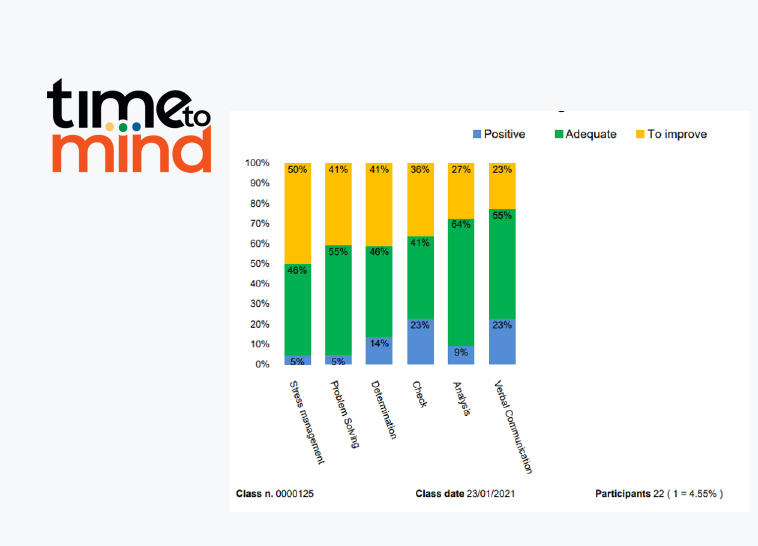
Now that the workings of TIME TO MIND are clear,
we invite you to sign up for the platform, perhaps using its free trial
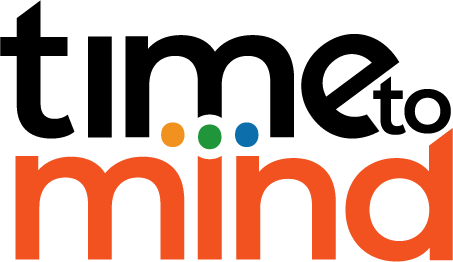
Time to Mind SA
Corporate values and legal compliance
Understanding Time to Mind
Free trial
Enter the Time to Mind platform, choose your ability, try it out free of charge.
We accept

